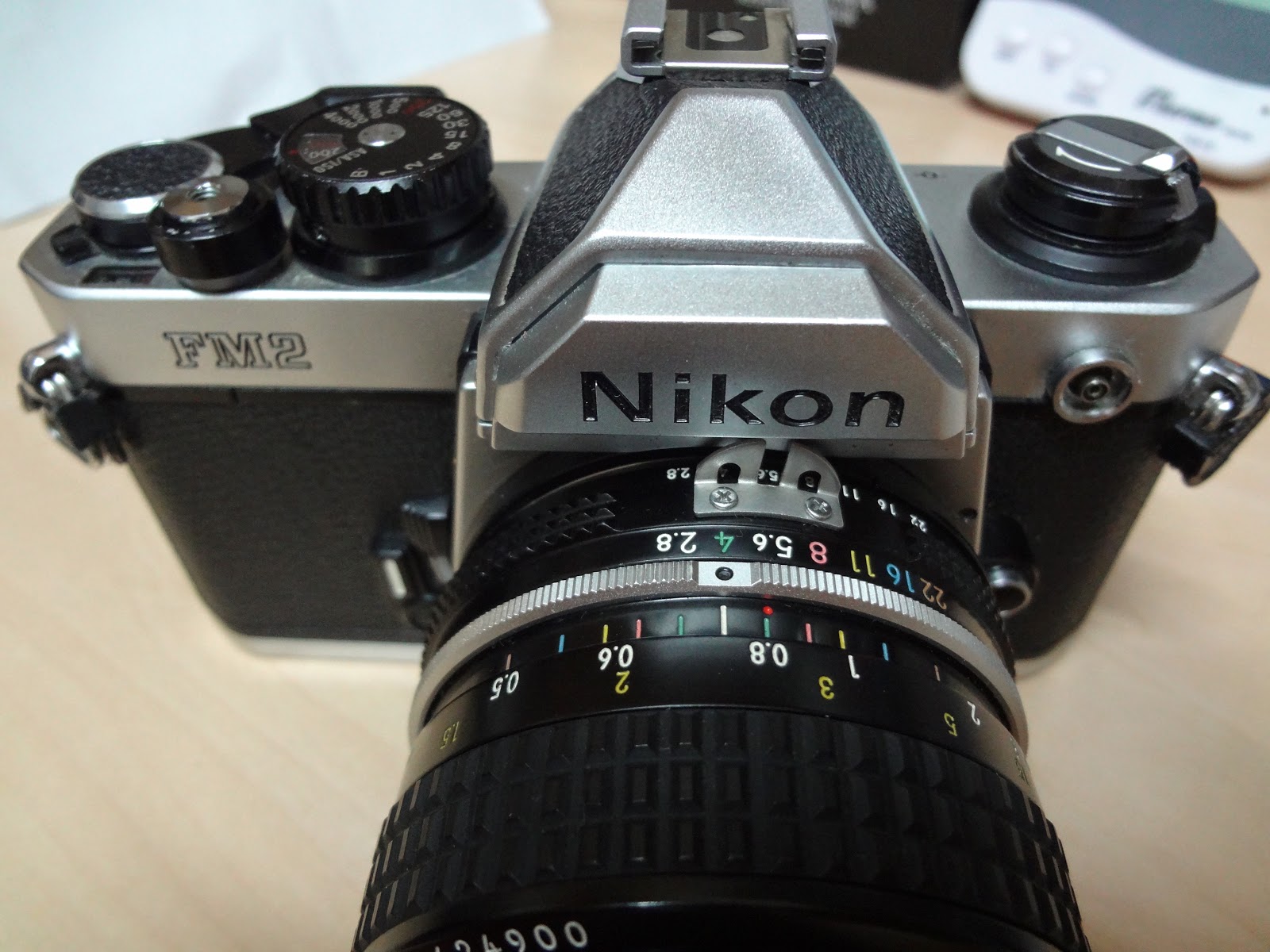 |
| Nikon FM2 |
 |
| With 28mm 1:2.8 AI Lens |
I have recently also bought a Nikon FM2N in addition to Canon AE-1 Program. This is bought through Ebay and it is a chrome body. The price of FM2N is about 6 times the price of Canon AE-1 Program. Of course, there are cheaper Nikon around but the FM2N seems to have demand that supported the price. The price was supported due to the famously durability of the FM2N as compared to others of the same period. It could still function without a battery (similar to my Yashica FX3) Nikon produced the FM2 from 1982 to 2001. The earlier version was produced the same time AE-1 Program was produced. From 1984, the N version was produced with a higher flash sync speed. There is also a T version which is for its titanium shutter screen.
The FM2 was famous for its high shutter speed which is the fastest in the 80s at 1/4000. I remember an advertisement showing the incredible fast speed of photography that it was able to capture a speeding bullet and for the bullet motion to be freezed as it passed through its target. I think Nikon FM series cameras (especially the chrome version) are beautiful because of its uniquely black top housing the prism. We can see that the new Nikon Df is designed with the FM series in mind. It is the Nikon Df that makes me attracted to the Nikon FM series. For less than 10% of the price of a new Nikon Df body, about USD$2400, I get a full frame SLR that has similar design and still have plenty of spare change even with 35mm films and processing costs considered. Of course, the Df will depreciate over time as it is highly electronic and digital based. While FM2 is fully mechanical/analog that has depreciated and will probably hold its value. Hopefully, it will be an collectible item.
I spent some time trying to understand the compatibility of various lens mount in different period of time, from Ai, Ai-S, AF-S, AF-D, VR to G. I have the impression that Ai lens can still be mounted on the latest DSLR camera although certain functions may be impaired. However, Canon makes distinction between FD and EOS mount, although a photographer can purchase a FD-EOS adaptor to mount older lens.
If I could recall correctly, as a teenager, Nikon cameras did not capture my attention. Probably because it was expensive and more professional. As a poor student, I could only afford Yashica and even Canon was considered expensive. I never had a Nikon until recently when I bought a Nikon Coolpix S2600 which is a cheap compact camera. In these days, Canon and Nikon mainly do not manufacture their cameras/lens in Japan, most were made in China/Thailand/Malaysia. In the 80s, the camera and lens from these 2 companies were made in Japan.
Some thing unique about FM2N is that the lock position of the camera is when the film advance lever is in its close position. In order to press the shutter release, I have to pull the film advance lever out. This is different from Yashica or Canon cameras. Old cameras like the AE-1 Program does have a lock mechanism that is independent of the film advance lever. For my Yashica FX3, there is no lock mechanism. Secondly, FM2N has a camera back lock lever. To open the camera back, I have to push the lock and also pull the film rewind knob at the same time. This is something not found in Canon or Yashica cameras. I found this troublesome in the FM2N.
The camera does have the advantage of displaying the aperture setting within the viewfinder. This assist the photographer to know exactly the aperture of the lens while looking at the viewfinder. My impression is that Nikon attempts to be different in features as compared to the rest of the camera brands, some are interesting and good while others might not be.
Nonetheless, the FM2N is a very good looking camera, with the right proportion, sharp features and great colour combination on its body.